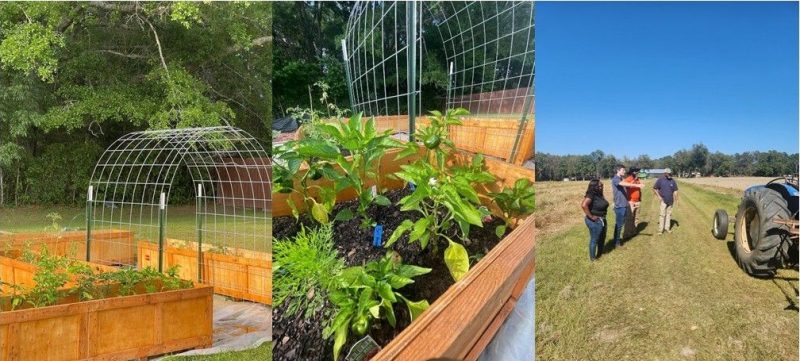People in Florida often turn their backyards into farms for a variety of cultural and practical reasons. While these endeavors often start as hobbies, they can be turned into a profitable business. Turning your love for farming into a profitable business starts with a clear plan and smart strategies. Whether you dream of creating a relaxing weekend retreat or building a steady income source, defining your purpose is the essential first step toward building a successful future. You should ask yourself: Is my farm primarily for enjoyment, or do I hope to turn it into a business? Understanding your “why” will guide every decision you make, including choosing a niche that fits your interests and/or the local market demand.
–
Hobby Farm Vs. Business Farm
–
There is a key distinction between a hobby farm and a business farm. A hobby farm is grown for personal enjoyment, with no real intention of generating profit. A business farm, however, operates to make money and may require licenses, careful record-keeping, and tax reporting. Transitioning from a hobby to a business means treating your farm like an enterprise from day one. (Resources).
–
Time and labor commitment
Time and labor are critical factors to consider. Hobbies offer flexibility—you can work whenever you like. Businesses, on the other hand, demand consistency. Customers expect reliability, and operations like planting, harvesting, marketing, and sales need to be maintained even when life gets busy. Before committing, honestly evaluate whether you have the time and energy needed to run a full farm operation. If you can make the entire process enjoyable then that enables you to thrive under pressure as well. Which should not be too tough, because to start with this was your hobby.
–
Steps to make your hobby a business
When you are ready to take the next step, you will need to register your farm as a business. This involves obtaining the appropriate licenses and a tax ID or Employer Identification Number (EIN) number. According to the Small Business Administration (SBA), “Your Employer Identification Number (EIN) is your business’s federal tax ID number. You need it to pay federal taxes, hire employees, open a bank account, and apply for business licenses and permits.” Contact your local Small Business Development Center (SBDC) for guidance with business planning and registration.
–
Food Laws
Additionally, it is vital to learn about food safety laws and regulations (Food Safety). New and small farmers must comply with food handling rules and stay informed about cottage food laws, especially if you plan to sell baked goods, jams, honey, or other homemade products. Accurate labeling, compliance with food safety standards, and participation in food safety training (many of which are offered through Extension Offices) are key steps toward running a legal and safe farm business.
–
Mixed Farming
Many small-scale growers and hobbyist farmers are finding success by practicing mixed farming—growing fruits, vegetables, composting, and practicing apiculture (beekeeping) in the same space.
Benefits
- Bees boost pollination, and enhanced pollination from bees can significantly increase crop yield. Having a variety of crops (as opposed to a monoculture) attracts a wider variety of beneficial insects which can help naturally manage pest populations. Creating natural reservoirs for beneficial insects like ladybugs, lacewings, and parasitic wasps, helping to control pest populations naturally.
- Compost improves soil fertility and health, allows for the recycling of organic waste, and can save money by reducing pesticide use while boosting production, according to the Environmental Protection Agency (EPA).
Spacing requirement
Understanding and analyzing the available space, strategic layout, or smart spacing, is essential. Compost piles should be placed away from edible crops to avoid contamination, and bee hives should be positioned at least 15 to 20 feet from active work areas to ensure the safety of both bees and workers. Crops should also be spaced to allow for good air circulation, reducing the risk of fungal diseases. –
Harvesting and packaging
Harvesting and packaging play crucial roles in maintaining product quality and food safety. Crops should be harvested during the cooler parts of the day to preserve freshness, and food-safe, reusable packaging should be used to market products effectively. –
Pathogens and Pests
Managing pathogens and pests is another critical task. Compost must be properly aged—reaching internal temperatures of at least 130-140°F to eliminate harmful bacteria. Regular inspections for pests and diseases, along with crop rotation strategies, help maintain a healthy farm system.
However, there are drawbacks to be aware of. If composting is not managed correctly, harmful pathogens like E. coli or Salmonella can contaminate crops. Overcrowding of plants and beehives can also lead to disease outbreaks and reduced productivity. It is advisable to stay in contact with your FDACS Apiary Inspector to monitor and maintain hive health. Careful spacing, consistent monitoring, and strict adherence to good agricultural practices are essential to protect your crops and your business.
By blending fruits, vegetables, composting, and beekeeping into a single, productive operation—and managing it with care—you can transform your hobby farm into a thriving small business. Start small, stay focused on soil health and crop care, and watch your passion grow into a sustainable, profitable enterprise.
Mixed farming allows you to maximize productivity, diversify your income streams, and turn your passion into profit. When managed carefully, this approach creates a self-sustaining mini-ecosystem. Transitioning a small mixed farming operation from a hobby to a business could be a win-win, if you plan the transition wisely, carefully weigh the pros and cons, and be aware of all the dos and don’ts.
- 2025 Emerging Farmers Symposium – September 4 - August 8, 2025
- Farming Your Hobby into a Business - May 2, 2025
- FAMU Sugarcane Field Day Proves Interest is Still High for Local Farmers - November 15, 2024

